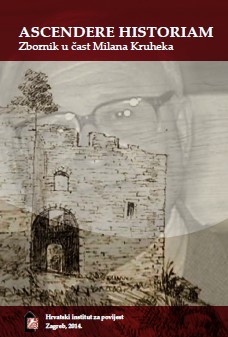Značaj i sudbina pakračke utvrde kroz povijest
Significance and destiny of the Pakrac castle throughout the history
Author(s): Vijoleta Herman Kaurić
Subject(s): Local History / Microhistory, Military history, Modern Age, 13th to 14th Centuries, 15th Century, The Ottoman Empire
Published by: Hrvatski institut za povijest
Keywords: Pakrac castle; Priory of Vrana; estate; the Jankovići family;
Summary/Abstract: Pakrac castle was firstly mentioned in 1278 as castrum s. Joannis, and in that time it was ruled by frater Hugo, the preceptor of the Order of St. John. This castle had massive walls and impressive defensive turrets, and by the opinion of the experts it was constructed most likely in the 12th century. Although there are not so many historical records, one can argue that Pakrac castle was erected by the Templars. In the period from 1256 to 1260 there was even mint situated in it. The Pakrac castle was a part of the Priory of Vrana until this priory has been abolished in 1541. In that period it was governed by the most influential persons of the medieval Kingdom of Hungary-Croatia such as John of Paližna, the Talovac brothers, Nicholas of Zrin. This impressive stronghold had key role in the defense of the Croatian lands against the Ottoman raids, and later, when it was conquered, in the defense of the Ottoman Empire. After the liberation of the area from the Ottoman rule, Pakrac castle became the center of the Pakrac estate, and the castle itself was more used in the economic purposes than in the military ones. Nevertheless, military contingent stayed in the castle until 1750 when they moved into nearby Trenk’s castle. Hence, the Pakrac castle finally lost its military usage. In the later period the main building of the castle was residence of the bailiff of the Pakrac estate, while the turrets were used as the ice storage. In the end of 1877 the owner of the old castle became the Serbian Orthodox Parish of Pakrac, but for them the old castle had no purpose and it was left to decay. Even more, the new owner asked in 1909 for permission to demolish it, but it was postponed after the intervention of the Provincial Government. Nevertheless, it was partly demolished in 1922, just to be totally demolished in the following year.
Book: Ascendere historiam: Zbornik u čast Milana Kruheka
- Page Range: 497-518
- Page Count: 22
- Publication Year: 2014
- Language: Croatian
- Content File-PDF

